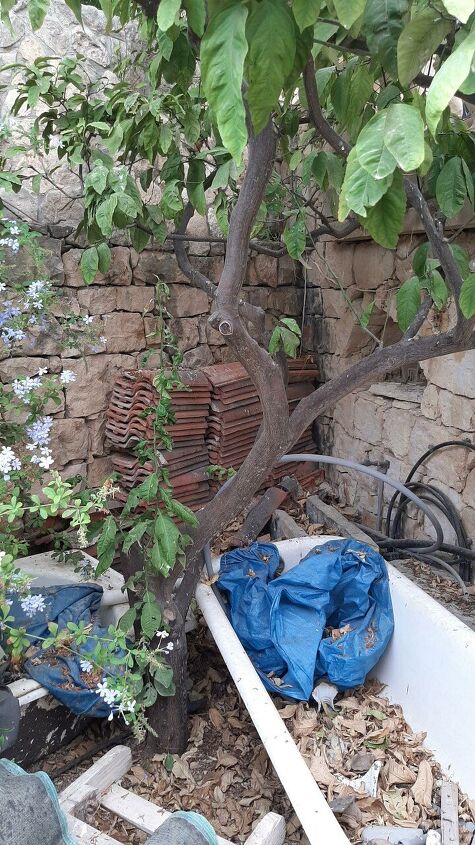Transplanting Trees
-
Here's a very good explanation of handling roots for transplanting trees. Sounds like you might have to wait a while: http://www.clemson.edu/extension/hgic/plants/landscape/shrubs/hgic1055.html
 3po3
on Feb 22, 2013
Helpful Reply
3po3
on Feb 22, 2013
Helpful Reply -
-
I wouldn't worry too much about the small tree. For the bigger one, you might want to take a look at these American Nursery Standards Institute guidelines for rootball sizes: http://hort.ifas.ufl.edu/woody/root-ball-dimension-chart.shtml
 Douglas Hunt
on Feb 23, 2013
Helpful Reply
Douglas Hunt
on Feb 23, 2013
Helpful Reply -
-
All I can say it is going to be a big hole on the large tree. It is amazing how large the root structure is on a small tree as compared to what you see on the surface.
 Woodbridge Environmental Tiptophouse.com
on Feb 23, 2013
Helpful Reply
Woodbridge Environmental Tiptophouse.com
on Feb 23, 2013
Helpful Reply -
-
Having been raised in the country where trees were all around and everyone thought they could move one, I can say that were I you, I would look for some small sprouts of oaks just as they are coming out from acorns or get some acorns and start them in a pot and then plant them. Moving trees can be a BIG job not only to properly dig up, but to get planted...only to have them die. I have also been told that you need to mark the magnetic north and replant in the same position for better results...old wives' tales sometimes have a lot of truth in them! Can't hurt!
 Jeanette S
on Feb 24, 2013
Helpful Reply
Jeanette S
on Feb 24, 2013
Helpful Reply -
-
i have several oaks(BURR) that come up and have NEVER been able to transplant one. now i leave them where they are and work around them. i have one growing up on the side of a walnut and cant seem to kill it , but try and transplant and it will surely die.
 Terry S
on Feb 24, 2013
Helpful Reply
Terry S
on Feb 24, 2013
Helpful Reply -
-
To add to all the good advice above...look for a landscape/nursery that has experience ball and burlapping trees for moving. We did a number of relocations and it comes down to the skill of the person doing the ball and burlap as you do not want to break the rootball. For larger trees (3" DBH or greater) we would dig a trench severing lateral roots. Water in a root stimulator. Refill the trench with loose soil. Wait a few weeks and then sever the bottom of the rootball followed by burlap and baling twine to hold the rootball together. Again - this was a professional crew doing the work. Once you have the tree ready to move the planting hole is critical. You want to dig a hole twice as wide and as deep as the rootball. If the soil is really dry (like it is here where we have been in an extended drought), fill the hole several times so that the soil all around the dug hole is moist. You then place the tree, and begin filling and watering with native soil until soil is level with the original top of the root ball. That all being said, I would use a specialist from a nursery/landscape business that has moved trees. Also, one last comment, you really want to move trees while they are dormant - less stress - so that they can begin to grow new roots without dealing with warmer temps and growing leaves! Good luck!
 Ouina
on Feb 24, 2013
Helpful Reply
Ouina
on Feb 24, 2013
Helpful Reply -
-
@Tom oaks can be a little tricky to transplant, I don't have experience, but our neighbours moved one about 7' tall to the other side of their lawn fairly close to another large tree in their yard. It died within about 2 weeks. Could be the lack of watering, but I was actually thankful for that, because it was right next to our vegetable garden and there is already enough shade and root invasion from the other tree. Good luck.
 Gail Salminen
on Feb 24, 2013
Helpful Reply
Gail Salminen
on Feb 24, 2013
Helpful Reply -
-
I'd like to thank everyone for their help. The responses were pertinent and helpful.
 Tom
on Mar 09, 2013
Helpful Reply
Tom
on Mar 09, 2013
Helpful Reply -
Related Discussions
Seeking Advice on Successfully Transplanting a Lemon Tree?
I have a healthy lemon tree tucked away in the back corner of my house, in an area that's become a bit of a storage spot over the years. The tree itself is thriving, ... See more
How or when can I transplant an avocado tree into the ground?
How to transplant a weeping willow tree that is 5 ft tall?
When to transplant elderberry tree
I have a 10' tall elderberry tree in Jacksonville, FL that needs to be moved. In past years the tree went into dormancy this time of year but La Nina conditions have ... See more
Would you rather wash and fold laundry or clean the dishes?
Given the choice, would you prefer washing the dishes or doing laundry? Share your preferences and insights!
Need help picking a paint color to match my tile
The tile is gray/white with a hint of beige and looks like wood.The kitchen counters are Baltic beige and cabinets are dark wood as well
How is it really spelled?
Hi, I may be way off base, and if so, I apologize in advance, but I have heard many references to "Fir", the type of wood, with regards to kitchen walls and soffits, ... See more



